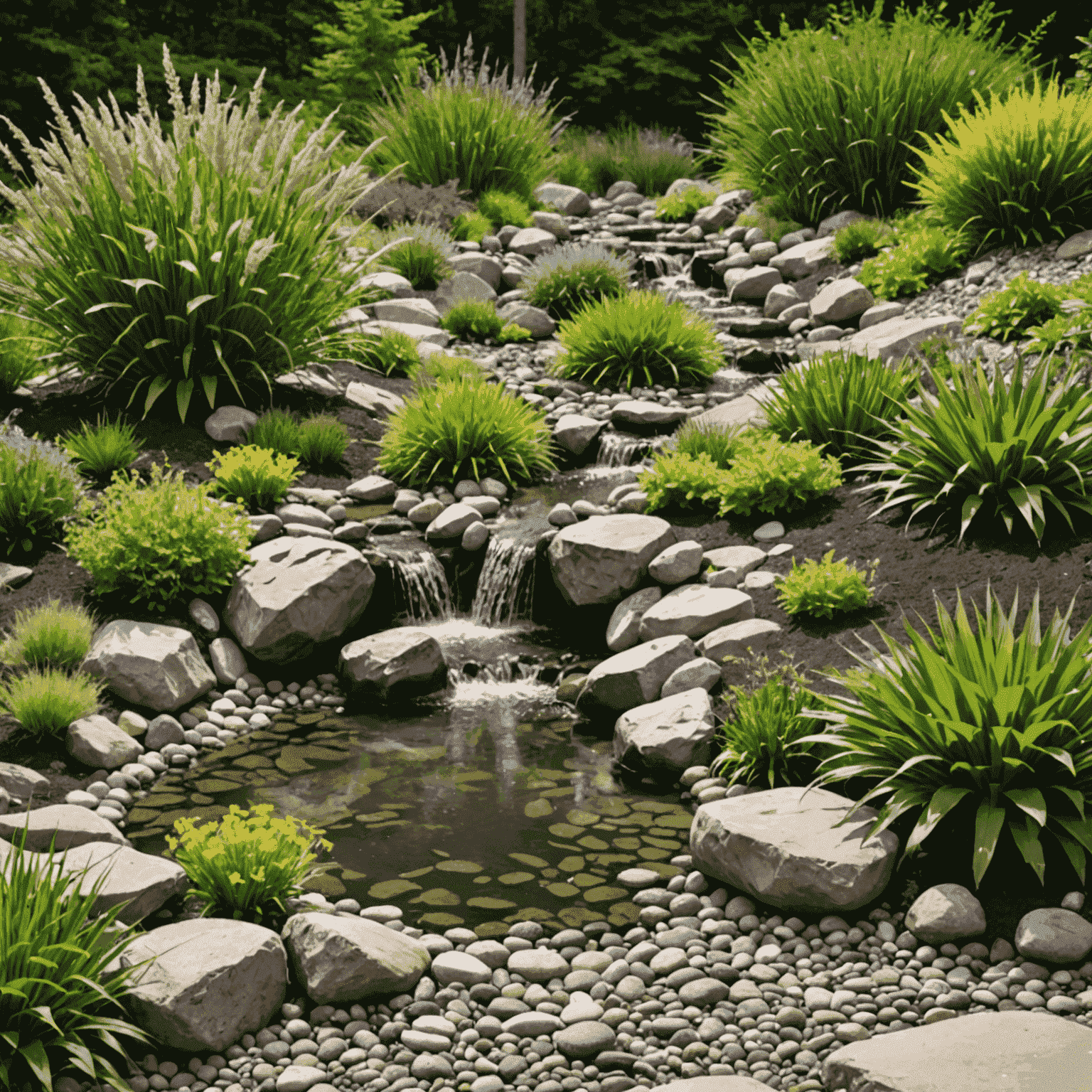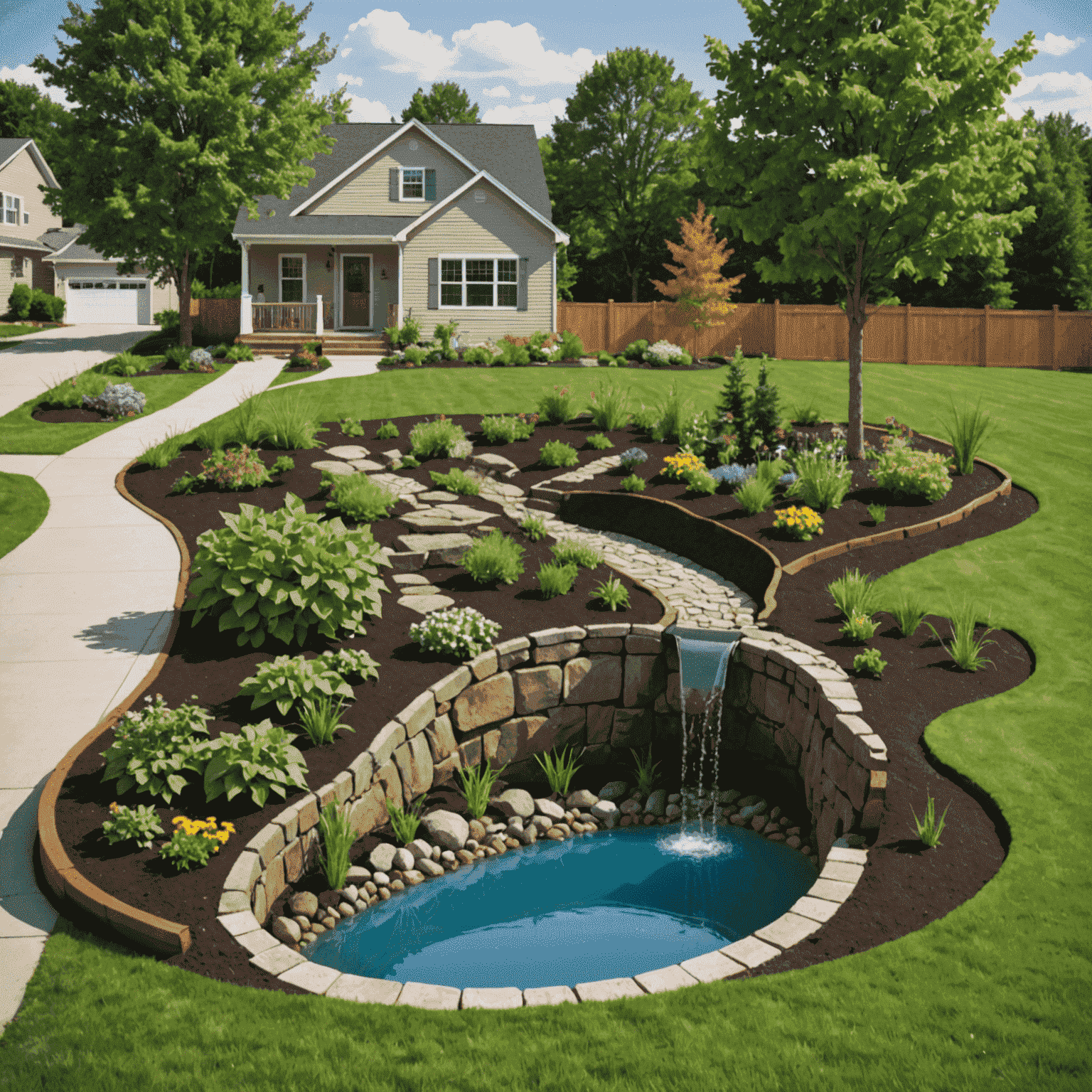Rain Garden Design: Managing Stormwater Runoff in Your Landscape
Rain gardens are an attractive and effective solution for managing stormwater runoff in your landscape. By creating a rain garden, you can help reduce flooding, improve water quality, and enhance the beauty of your outdoor space.

Explaining a Rain Garden?
A rain garden is a shallow depression in your landscape that collects and filters rainwater from roofs, driveways, and other impervious surfaces. It's planted with native species that can tolerate both wet and dry conditions, helping to absorb and clean the water before it enters the groundwater system.
Benefits of Rain Gardens
- Reduces stormwater runoff and helps prevent flooding
- Improves water quality by filtering pollutants
- Provides habitat for birds, butterflies, and beneficial insects
- Enhances the beauty of your landscape
- Requires less maintenance than traditional lawns
Designing Your Rain Garden
Follow these steps to create an effective and attractive rain garden:
1. Choose the Right Location
Select a spot at least 10 feet away from your home's foundation, where water naturally flows. Avoid areas with utility lines or septic systems.
2. Determine the Size
The size of your rain garden depends on the area of impervious surface draining into it. A general rule is to make your rain garden about 20-30% of the drainage area.
3. Test the Soil
Perform a percolation test to ensure your soil drains well. If it doesn't, you may need to amend the soil or choose a different location.
4. Excavate and Shape the Garden
Dig a shallow depression, typically 4-8 inches deep, with gently sloping sides. Create a level bottom to ensure even water distribution.

5. Choose Native Plants
Select native plants that can tolerate both wet and dry conditions. Group plants according to their water needs, placing those that prefer wetter conditions in the center.
6. Add Mulch and Rocks
Use a layer of organic mulch to retain moisture and suppress weeds. Incorporate rocks or river stones to add visual interest and help prevent erosion.
Maintaining Your Rain Garden
Rain gardens are relatively low-maintenance, but they do require some care:
- Water regularly during the first growing season to help plants establish
- Remove weeds as needed
- Replace mulch annually
- Prune and divide plants as they grow
- Clean out any accumulated sediment or debris
Plant Suggestions for Your Rain Garden
Here are some native plants that work well in rain gardens:
- Black-Eyed Susan (Rudbeckia hirta)
- Swamp Milkweed (Asclepias incarnata)
- Blue Flag Iris (Iris versicolor)
- Joe-Pye Weed (Eutrochium purpureum)
- Cardinal Flower (Lobelia cardinalis)
- Switchgrass (Panicum virgatum)

Conclusion
Creating a rain garden is an excellent way to manage stormwater runoff while enhancing the beauty and ecological value of your landscape. By following these design principles and maintenance tips, you can create an attractive and effective rain garden that will benefit your property and the environment for years to come.